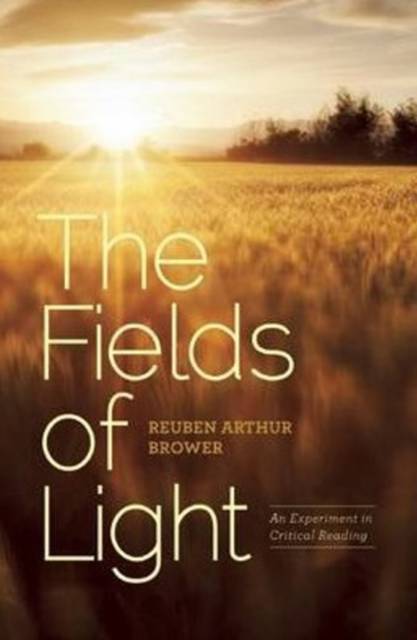
- Retrait gratuit dans votre magasin Club
- 7.000.000 titres dans notre catalogue
- Payer en toute sécurité
- Toujours un magasin près de chez vous
- Retrait gratuit dans votre magasin Club
- 7.000.000 titres dans notre catalogue
- Payer en toute sécurité
- Toujours un magasin près de chez vous
Description
From a short lyric to a complex novel, follow Reuben Brower's lead through the attentive reader's fields of light.
In this classic study, Harvard professor Reuben Brower guides the reader from noticing the alluring details of a well-made poem, novel, or play to attending to the encompassing ways in which the writing achieves its greatness.
Part One: THE DISCOVERY OF DESIGN
I. The Speaking Voice (Dramatic Design)
II. The Aura Around a Bright Clear Centre (Design in Imagery)
III. Saying One Thing and Meaning Another (Design in Metaphor and Irony)
IV. The Figure of Sound (Design in Sound)
V. The Sinewie Thread (Key Designs)
Part Two: IN LARGE LETTERS
VI. The Mirror of Analogy 'The Tempest'
VII. Something Central Which Permeated: Virginia Woolf and 'Mrs. Dalloway'
VIII. The Groves of Eden: Design in a Satire by Pope
IX. Light and Bright and Sparkling: Irony and Fiction in 'Pride and Prejudice'
X. The Twilight of the Double Vision: Symbol and Irony in 'A Passage to India'
XI. The Flower of Light: Integrity of Imagination
"Not only does Brower begin his book with a lyric, but he deliberately chooses a very short one indeed, as if to show how much can be said about the smallest of poetic 'figures' looked at closely. The poem is 'The Sick Rose, ' one of William Blake's best-known songs of experience...Brower's task is to show how the poem is 'imaginatively organized, ' by which he means that, to read it, we must sense the 'extraordinary interconnectedness among a relatively large number of different items of experience.'" -From the Foreword by William H. Pritchard
Reuben Arthur Brower (1908-1975) was a professor of classics and English at Amherst College before he moved to Harvard University, where he became Cabot Professor of English. He is perhaps best (and most fondly) remembered for a course he created at Harvard, Humanites 6: Interpretation of Literature, known familiarly to students as "Hum 6."
Spécifications
Parties prenantes
- Auteur(s) :
- Editeur:
Contenu
- Nombre de pages :
- 218
- Langue:
- Anglais
Caractéristiques
- EAN:
- 9781589880818
- Date de parution :
- 05-03-13
- Format:
- Livre broché
- Format numérique:
- Trade paperback (VS)
- Dimensions :
- 127 mm x 201 mm
- Poids :
- 272 g







